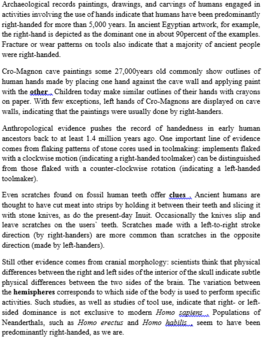Read the following passage and mark the letter A, B, C or D to indicate the correct answer to each of the questions from 36 to 42.
Life expectancy is the period of time that a person can expect to live. Life expectancy varies greatly between genders and cultures. It used to be that women had a lower life expectancy than men (1 in every 4 women died in childbirth), but now they live an average of four to five years longer than men. Life expectancy has been increasing rapidly over the last centuries. With the advent of such modern miracles as sewers, medicine and a greater understanding of how diseases are spread, our life expectancy has increased by 25-30 years.
In developing countries like Swaziland, where there is a high HIV/ AIDS rate, life expectancy is as low as 32.6 years. In developed countries like Australia, life expectancy rates are as high as 81 years. There are an increasing number of factors which can cancel out the disadvantages you have. The one that we are looking at now is how your career can affect your life expectancy. Choosing the wrong career can result in a shorter life!
If you want your career to positively influence your life expectancy, you have to be made of money. That's right. Rich people in wealthy areas of England and France live 10 years longer than the people in poorer areas. Having a successful career has its drawbacks, too if the result of hard work is stress.
Stress can lead to a number of psychological disorders such as depression, anxiety, fatigue, tension and aggression. These conditions may result in a lack of concentration and an increase in serious injuries at work. They can also lead to high blood pressure and heart attacks which seriously affect life expectancy.
If you are worried that your job might decrease your life expectancy, you probably need to avoid careers on "dangerous jobs" list such as timber cutters, pilots, construction workers, roofer, truck drivers.
So if you don't want to kick the bucket at an early age, choose a career in something other than timber cutting, but above all, remember to relax.
From Pre-Essence Reading by Rachel Lee, Longman
The phrase "kick the bucket" in the passage is closest in meaning to “____________”.
A. live
B. relax
C. succeed
D. die






Đáp án D
Dịch nghĩa: Cụm “kick the bucket” gần nghĩa nhất với “____________”.
A. sống
B. nghỉ ngơi
C. thành công
D. chết